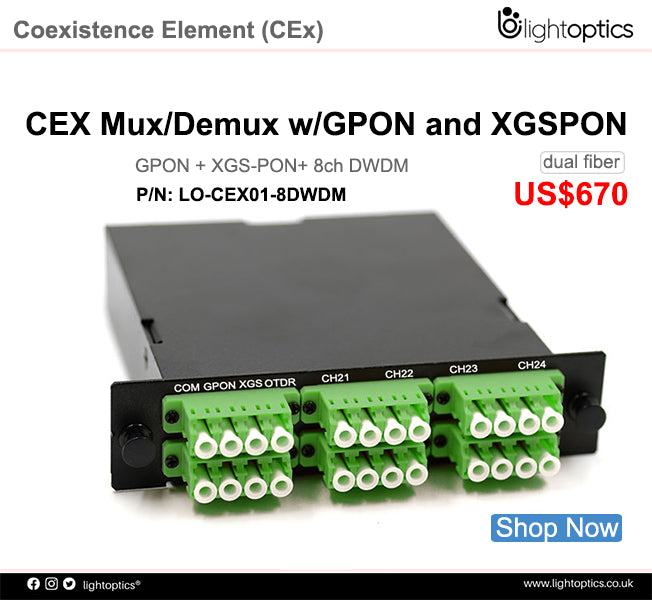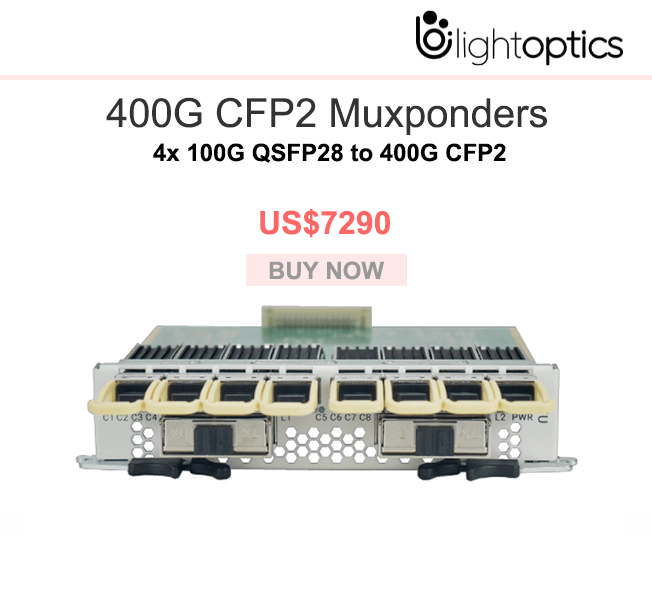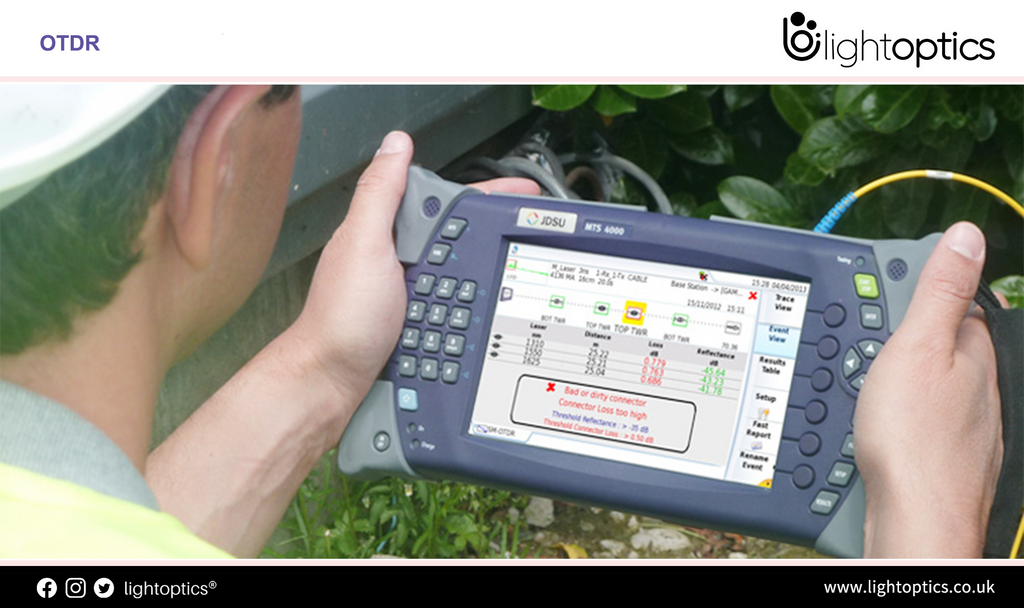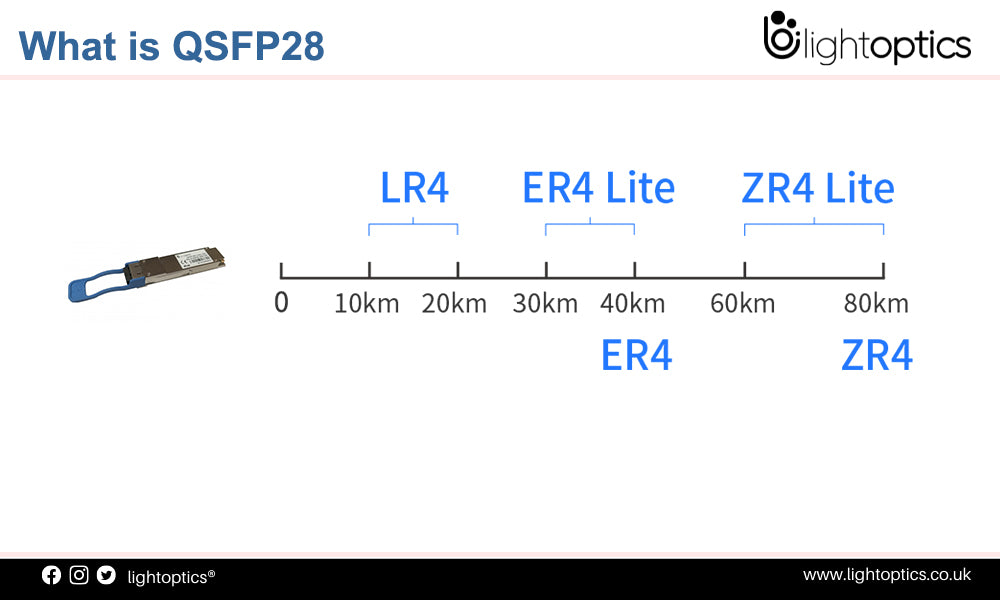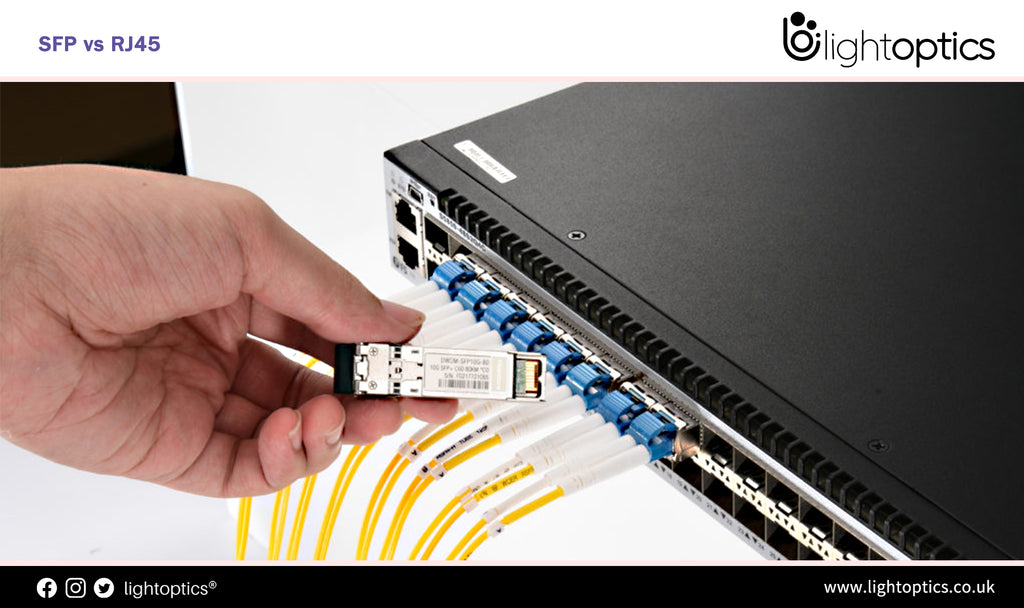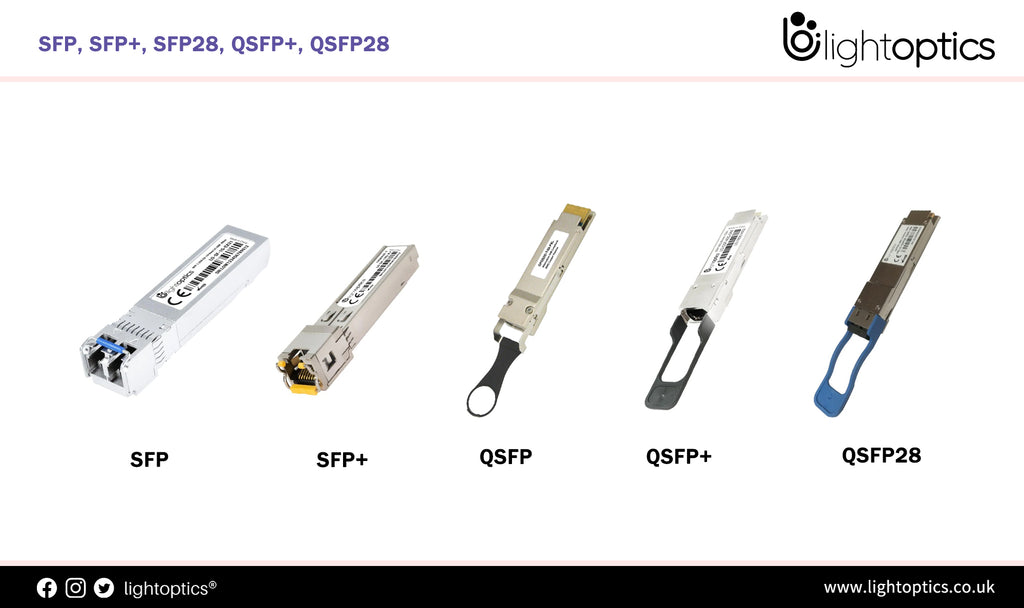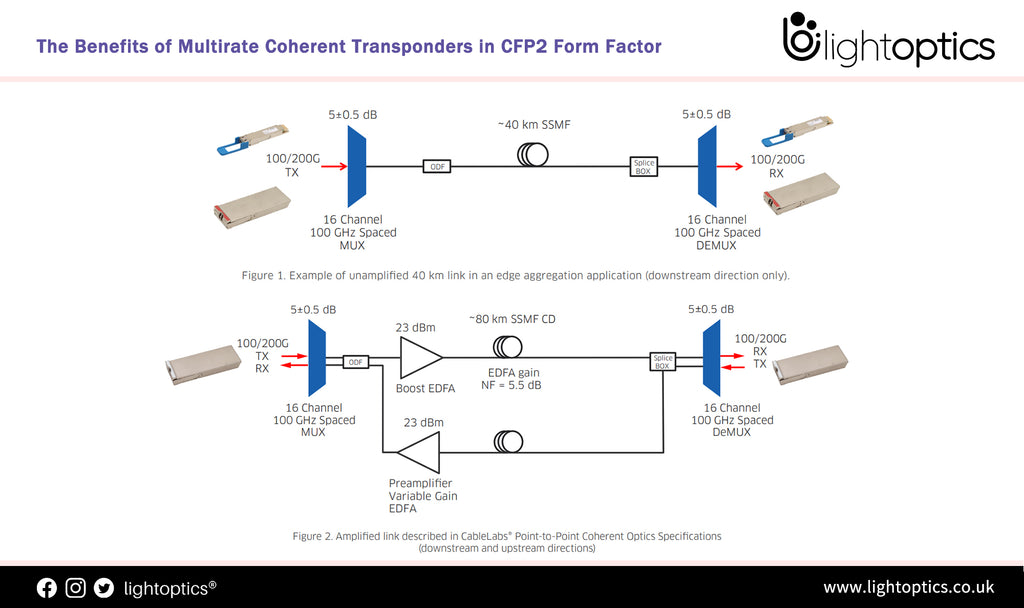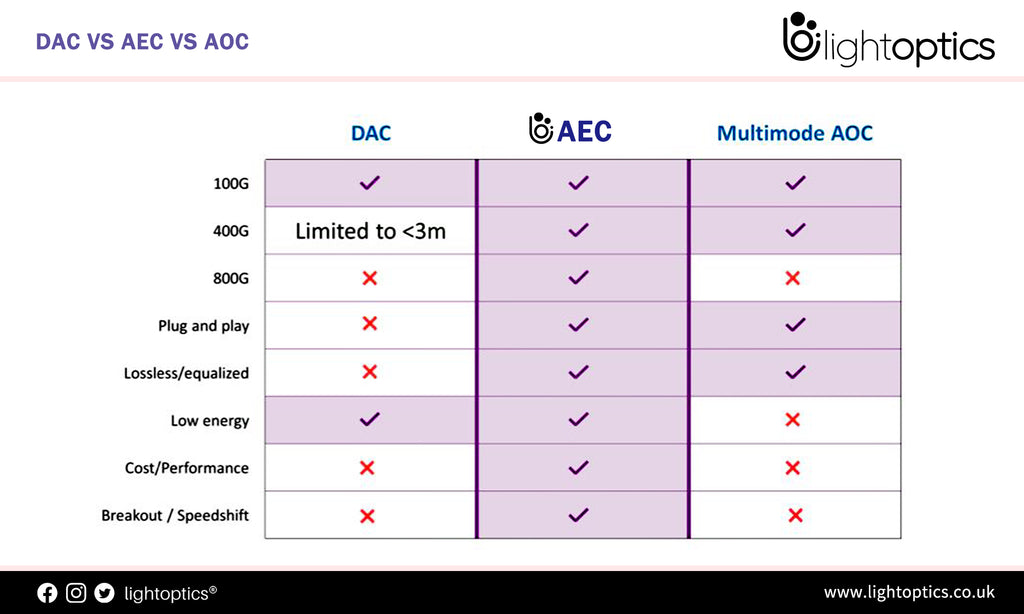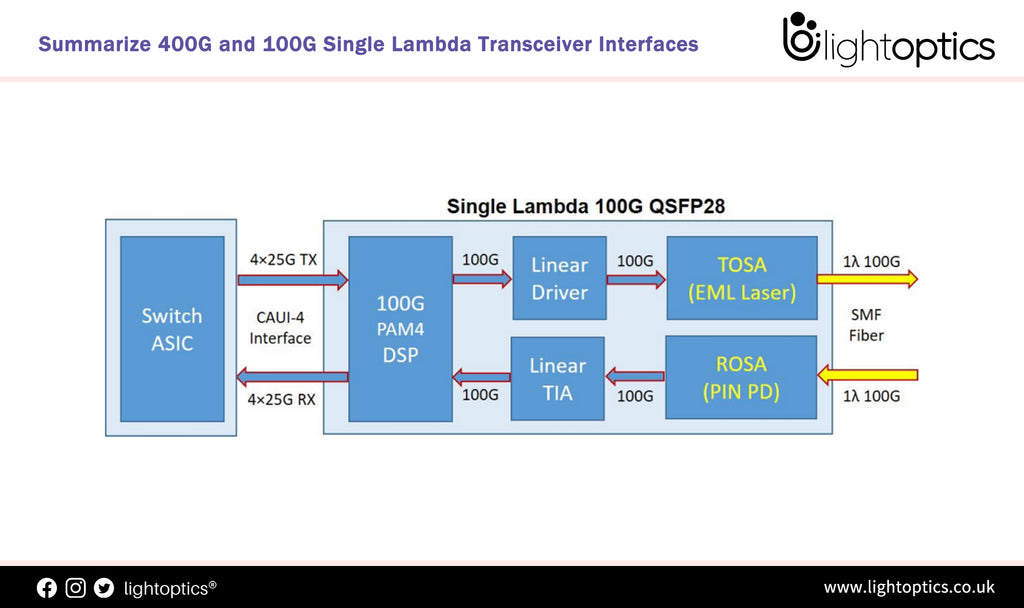-
How to Choose a Perfect OTDR?
How to Choose a Perfect OTDR? The past few years have witnessed the boom in optical fiber being used in the network communication industry. In order to make sure that the fiber network is reliable and accessible, a more accurate and faster methodology for assessing the integrity of the infrastructure is indispensable. Therefore, it is essential to choose the right fiber optic testing tool/device:... -
Can a QSFP56 optic work with QSFP28 cable
What is QSFP28 In 2014, QSFP28 (an abbreviation for quad small form-factor pluggable 28) was published to carry 100 Gigabit Ethernet, EDR InfiniBand, or 32G Fibre Channel. It offers 4 channels of high-speed differential signals with data rates ranging from 25 Gbps up to potentially 40 Gbps, and meets 100 Gbps Ethernet (4×25 Gbps) and 100 Gbps 4X InfiniBand Enhanced Data Rate (EDR) requirements.... -
SFP vs RJ45: When to Choose Which?
High-end networking demands high-end equipment. RJ45 SFP module is a kind of transceiver modules, which has been utilized as a legacy solution for some years. This article will give a clear explanation to RJ45 vs SFP , and discussing what are the differences and what are they used for? When to Choose Which? You have a plethora of options, but eventually you have to make... -
Quickview about SFP, SFP+, SFP28, QSFP+, QSFP28, QSFP-DD and OSFP
Optical modules play a key role in the data communication industry, SFP, SFP+, SFP28, QSFP+, QSFP28, QSFP56, QSFP-DD and OSFP are different optical transceiver types. And all of them are hot-pluggable network interface modules used for connecting a network switch and other networking devices (such as a server or media converter) for data transmission. Then, SFP vs SFP+, SFP28 vs SFP+, QSFP vs QSFP28 vs... -
The Benefits of Multirate Coherent Transponders in CFP2 Form Factor
The exponential growth of content delivery and enterprise cloud service delivery, combined with the promise of future 5G wireless-based services for consumers, the IOT, and connected vehicles worldwide, will create unprecedented increases in network traffic across all access, edge, and core networks. To meet the imperative need for higher capacity and providing the best user experience, the operator and product development communities must accelerate roll-out of the... -
AEC--the substitute of DAC and AOC?
We all know AOC active optical cables, but have you heard of AEC active cables? Today, LightOptics will introduce to you what is AEC active cable and what are its advantages? What is AEC? The Active Electrical Cable (AEC) is a new category of plug and play interconnect designed for affordable, lossless operation at 100G, 400G, and faster speeds. AEC delivers the simple functionality and speed of... -
Summarize 400G and 100G Single Lambda Transceiver Interfaces
In this blog, we summarized the most common interfaces for 400G multimode and singlemode transceivers as well as the corresponding 100G transceivers. Please note that DAC/AOC cables or coherent transceivers are not coverd in this article. Form-factors for 400G transceivers QSFP-DD and OSFP are the 2 common form factors for 400G. For the transceiver interfaces in this post, both form-factors are performing equally well....
Customer Service: sales@lightoptics.co.uk
Shopping Cart
0
Close
Your Cart
Your cart is currently empty.

















